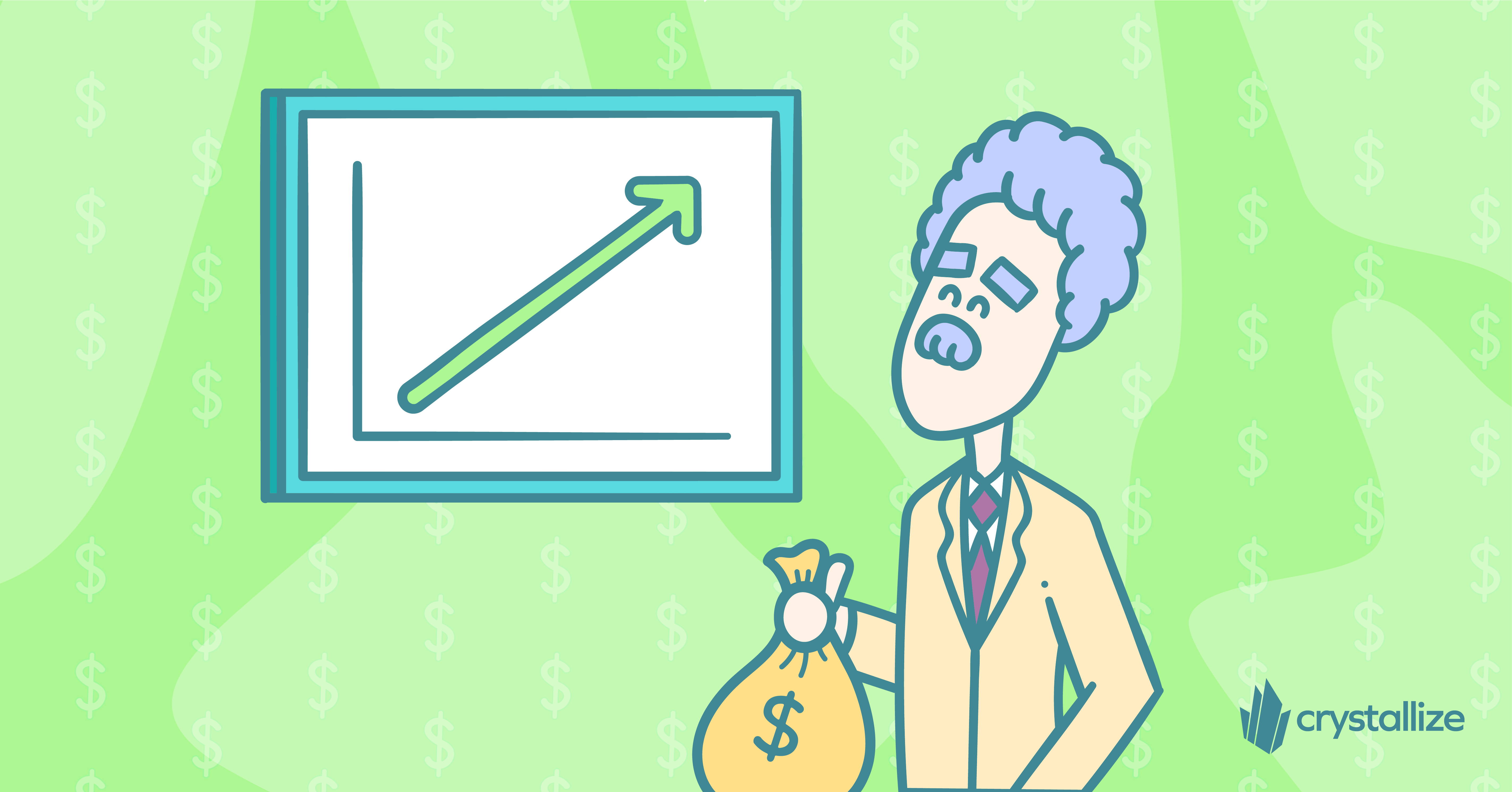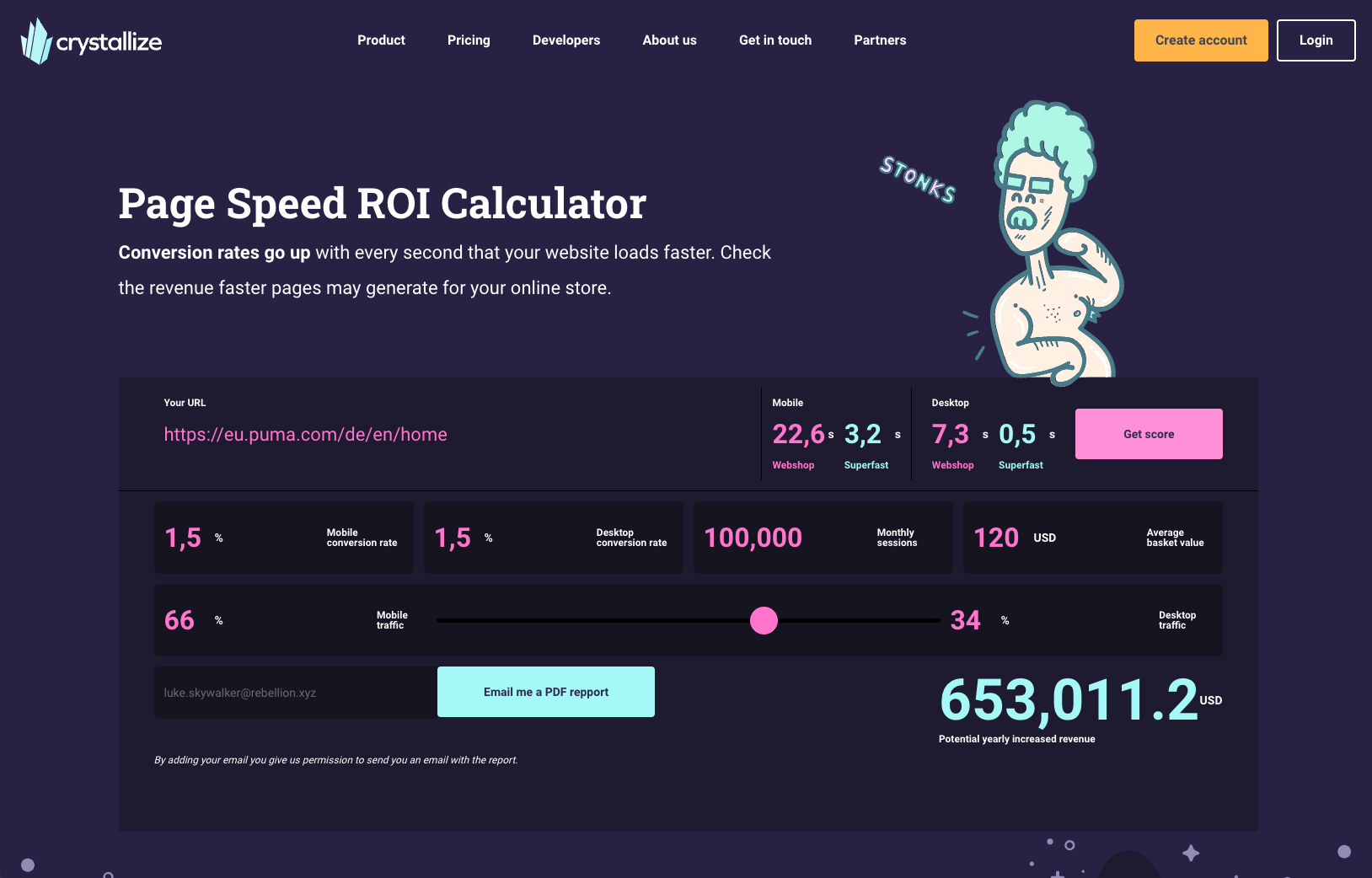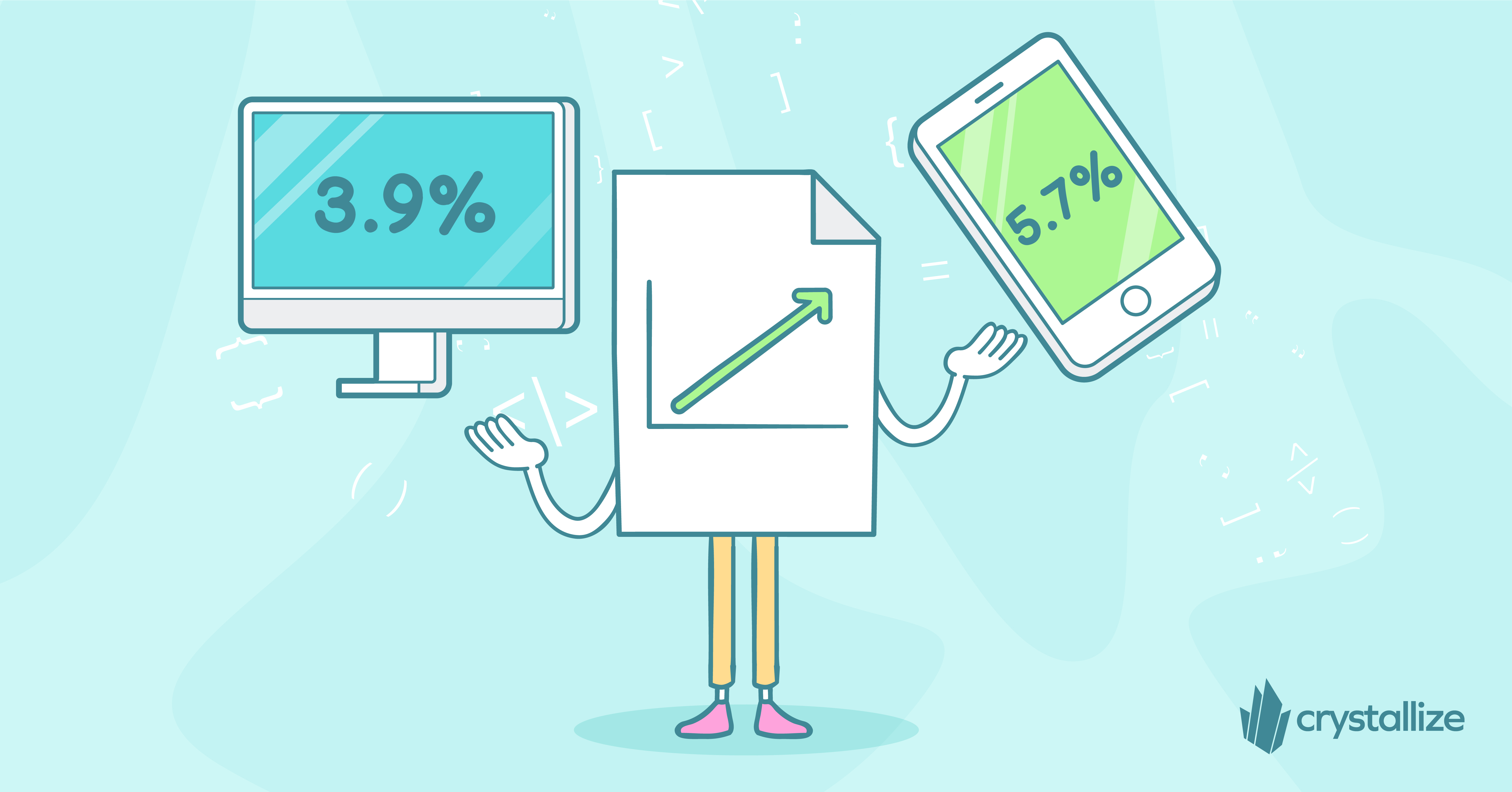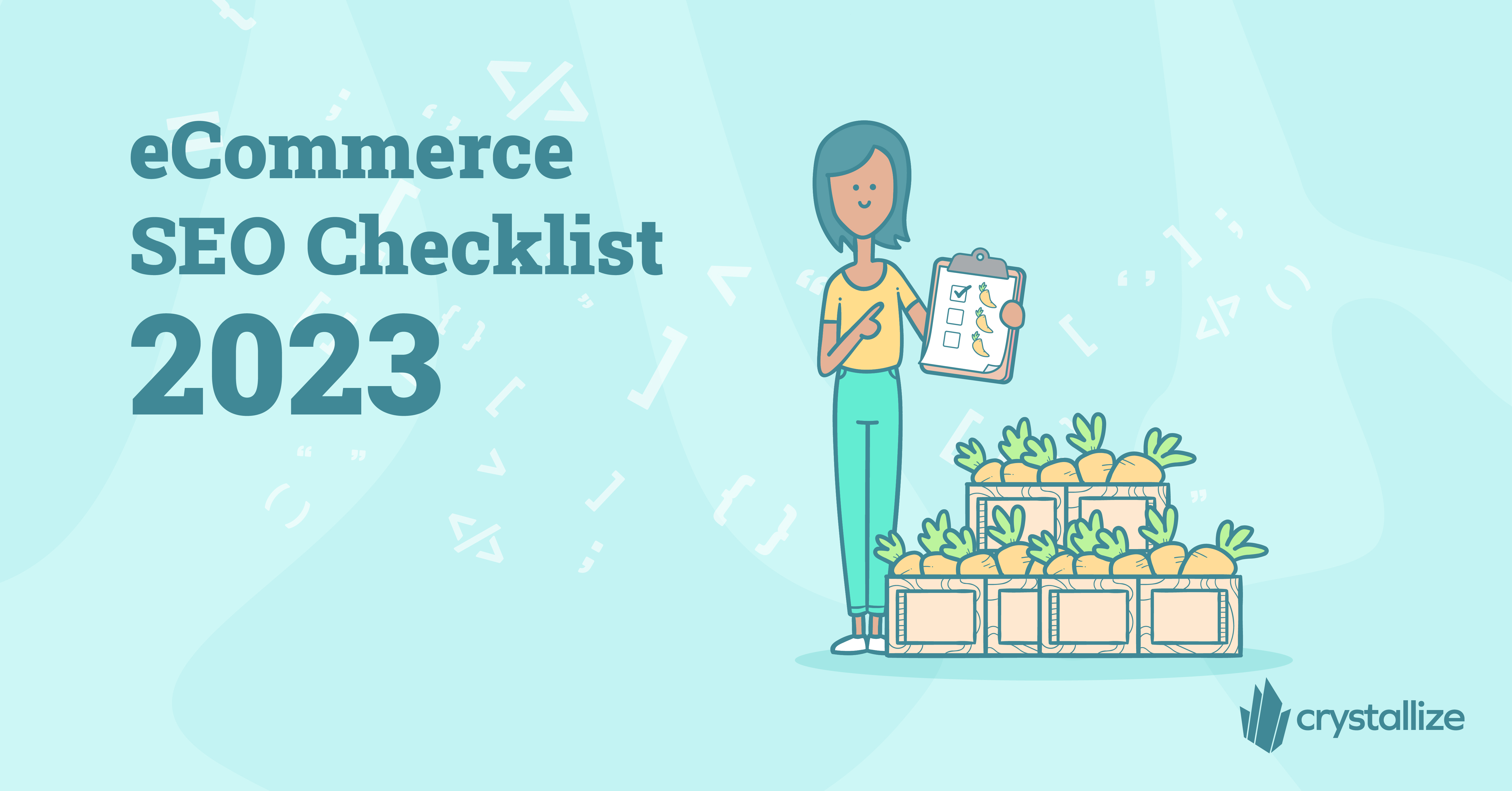eCommerce Conversion Rate Optimization (CRO): Boosting Your Conversion Rate Made Simple In 2023
Are you struggling to convert your website traffic into paying customers? Are you tired of spending hours and resources on driving traffic to your site with little to no return on investment? Then it's time to focus on Conversion Rate Optimization (CRO).

Did you know the average conversion rate was 1.81% as of July 2021? Whatmore today, a whopping 75.7% of online shopping carts are abandoned, often from window shoppers and checkout ghosters. Of course, it differs by industry - which begs the question, where does your CTR stand?
A survey of 1,600 Shopify stores found that if your conversion rate is over 4% - your store is in the top 20% of Shopify eCommerce stores, while anything under 0,8% places you in the bottom 20% of the stores.
Before you start chasing new and better sales channels, spend some time optimizing the most important one, your website. Improve your website performance with best practices for conversion rate optimization (CRO).
What Is Conversion Rate?
Your conversion rate is the number of conversions divided by the total number of visitors your eCommerce store receives. These conversions are most often the sales, but you can also track the number of micro-conversions, such as generating leads, email subscribers, free trial sign-ups, app downloads, etc.
For brevity, it doesn't hurt to note that we will primarily focus on sales in this article, although most of these tips can be applied to just about any conversion you're tracking.
Eg.
Website visitors: 2500
Conversions: 170
Formula:
Conversions / Website visitors X 100 = %
170 / 2500 X 100 = 6.8%What Is Conversion Rate Optimization (CRO)?
Conversion rate optimization is the process of optimizing your website and marketing channels to increase the percentage of visitors who take a desired action, such as making a purchase or filling out a form.
The main goal of conversion rate optimization is to increase your conversion rate or the number of users converting. Typically, it includes a variety of hypothesized improvements/changes on your website that you can then confirm through A/B testing.
Why CRO Matters for Your Business?
Before diving into the checklist, let's take a moment to understand why CRO is so critical for your business. By optimizing your conversion rate, you can:
- Increase revenue: More conversions mean more revenue without the need for additional marketing spend.
- Improve ROI: By improving your conversion rate, you can achieve a higher return on investment for your marketing efforts.
- Build customer trust: A well-optimized website creates a positive user experience, which helps build trust and credibility with your audience.
- Gain a competitive edge: By staying ahead of the curve with your CRO efforts, you can stand out from your competitors and attract more customers.
Strategies for Improving eCommerce Conversion Rate Optimization
Before you start generating ideas for CRO, you must analyze the current situation: your conversion rate, how your customers move through the funnel, what seem to be the friction points in their journey, frontend performance, traffic channels, etc.
There are many reasons your conversion rate may be lower than expected. From a feature not functioning correctly to site speed and overall friction in the user experience.
Did you know that for every second improvement in page load time, conversions increased by 2%?
Yep! One thing you'll learn about CRO (if you're just starting) is that the little things make all the difference.
Start with frontend performance, i.e., your website speed. The tech behind your website, or rather the execution of it, can make or break your business. Establish your frontend performance KPIs first. Start with common industry and/or competitor-defined ones and work through them.
💡Page Speed ROI Calculator.
Effectively your conversions increase for every second your website loads more quickly. To show you how much your business could benefit from performance gains, we've built a Page Speed ROI Calculator.
Add the URL of your website, and we will immediately retrieve the results regarding site speed. After you provide your session data, conversion rate, and average basket value, the tool will estimate the potential income boost that could result from making your webshop more efficient.

Use heat maps to identify your friction points, analyze the bounce and exit rates, the click-through rate, average session duration, and any other data you have gathered, and identify where you have the most significant drop-off.
Analyze your traffic stats data and make sure you're measuring traffic correctly. For example, for Google Analytics users, that would mean setting up GA4 for eCommerce.
Once you do the assessment, you'll have the starting point for defining the goals and KPIs you’ll be working on. Our CRO checklist is a good place to start.
Work On Your Trustworthiness
When online shopping involves, you must ensure that your eCommerce store appears trustworthy, especially with the skyrocketing cybercrime.
Start by ensuring your store complies with the Payment Card Industry Data Security Standard (PCI DSS). Consult a cybersecurity expert on the best practices that include SAML, SCIM, and multi-factor authentication.
And don't forget about your eCommerce platform provider: contact them too because they will usually have a set of security apps and tools you can add to your store to make it more secure.
Once you have determined that your store is secure, make sure your customers know it as well: send emails, brag on social media, add badges to the checkout pages, and include it in your value proposition.
Don't Disregard Product Descriptions
In a time when people prefer short-form content, you may be tempted to shorten everything on your website. However, while that is the general guideline, don't sacrifice any vital product information.
Good product descriptions will help your customers find relevant information: this is where you should address their main pain points and how the product solves them, as well as key product information such as the dimensions, materials, great 360-degree photos, and more.
Secondly, when written intelligently, these are extremely helpful for SEO.
💡Product Page Optimization.
Product page optimization refers to SEO optimization, the appearance of your product page in search results for targeted keywords, and CRO optimization. We discuss both of these in the product page SEO blog post.
Have a Content Marketing Strategy in Place
Go beyond product pages. Today more than ever, it is the story, the promise, that sells your product. Today commerce is as much about entertainment as it is about the use of products.
Do not focus solely on your product's exact match keywords. In The Spongebob Squarepants Socks Example (exclusive to the pdf version of eCommerce SEO guide), we show that a post on Best socks for winter 2022 can help your Size M SpongeBob SquarePants socks page get new visits, new audience, and new sales.
Minimize Friction During Checkout
It's the age of the frictionless user experience - even during checkout. In fact, 17% of consumers have abandoned their orders because they found the checkout process too long or complicated.
On a similar note, Shopify has shared data of some of its merchants who have managed to increase their conversion rate by 30% by implementing a custom checkout process.
Go through your checkout process, and see where you can cut down on the friction - but never-ever sacrifice security for user experience. Instead, you can and should have both.
Implement a Good Search Function
Consumers who visit your website usually want to find what they need fast. That's where a great search engine enters the picture.
Visitors who use search tend to convert at 4.63%, which is far higher than the average conversion rate. To build on that, 43% of your visitors go to the search bar when they first visit a website.
The numbers speak for themselves! If you don't already have one, contact your web developer. It's not too hard to implement, yet it will work wonders for your conversion rate.
Include Testimonials
Consumers tend to read testimonials as word-of-mouth or social proof, and there aren't many things that will help you convert as much as that.
Collect customer, magazine/website, and influencer endorsements, and add them to your website. A product with 5 reviews is 270% more likely to be purchased than one without reviews, and the probability increases by 15% when verified buyers sign the reviews.
It's the Age of Mobile-first Experiences
We've known for years now that the mobile has overtaken the desktop as the most used device for surfing the internet. But it's important to note that the same is true for online purchases.
5.7% of customers convert on mobile devices, in contrast to only 3.9% on desktops.
While both are certainly important, if it hasn't already, it's time for your eCommerce store to go mobile-first.

Personalize, Personalize, Personalize
Research shows that 80% of consumers are more likely to buy when offered a personalized experience. And I'm sure you've read an article or two on Netflix homepage personalization.
The thing is, personalization works!
Offering different homepages or product recommendations based on customer demographics, location, or order history should help you increase your conversion rate.
Community Building
Go beyond product pages … and content. Build a community of like-minded people. The cornerstones of creating a community for a product ecosystem are social media and owned media. A thriving community generates a consistent flow of orders and insightful product feedback that can help you refine your offering.
Continuously Iterate and Improve
To determine the effectiveness of your CRO efforts, you need to monitor and analyze your results regularly. Use tools like Google Analytics to track your KPIs and make data-driven decisions about your optimization efforts.
CRO is an ongoing process that requires continuous iteration and improvement. Keep testing and optimizing your site to ensure you're getting the best possible results.
💡Quick CRO Wins.
Although conversion rate optimization is a long-term game, here are a few ways to increase your CRO short-term:
- Better images and videos. One of the quickest CRO wins is offering high-quality standalone or in-use images and videos on product pages.
- Checkout Flow. The fewer steps you have in your checkout flow raises the likelihood of a finished purchase. It is as simple as that.
- Exit-intent popups. They can prevent visitors from leaving your website and make them shop more. When used in your checkout flow, they can reduce cart abandonment.
- Upsells. Once an item is added to the shopping cart, offer products that can be directly paired with added one.
- Get the emails. Not everybody is ready to buy on their first try. Get their emails. Offering newsletter or member subscription benefits is one of the easiest ways to get them on board later.
- Discounts. You can never get wrong with offering discounts. Shopify says its store owners are 8 times more likely to sell when discount codes are used.
- Free shipping. 68% of Americans said they didn't purchase at least half of the time when free shipping wasn't offered.
You can find more tips like this in our Conversion Rate Optimization (CRO) checklist in learn section of the website.
Now, Go Hunting Clicks
Improving conversion rates is an ongoing process for all businesses today. The goal is not to get your visitors to buy something from you. The goal is to get them to return and buy again.
Conversion rate optimization is just one piece of the puzzle for your online business success. Reliable tech in your stack, one that supports a composable commerce approach with outstanding frontend performance, great SEO, and (in general) focused marketing strategy, complete the puzzle.
We always say it all starts with the product/service you offer. Make sure you did that one right, and the rest will follow.
Wonder how Crystallize can help you run, grow and scale your business?
BOOK a personalized 1-on-1 demo today, and we’ll show you what makes Crystallize a powerful product story engine well suited for modern business.
Or, why not SIGN UP for FREE and start building.

